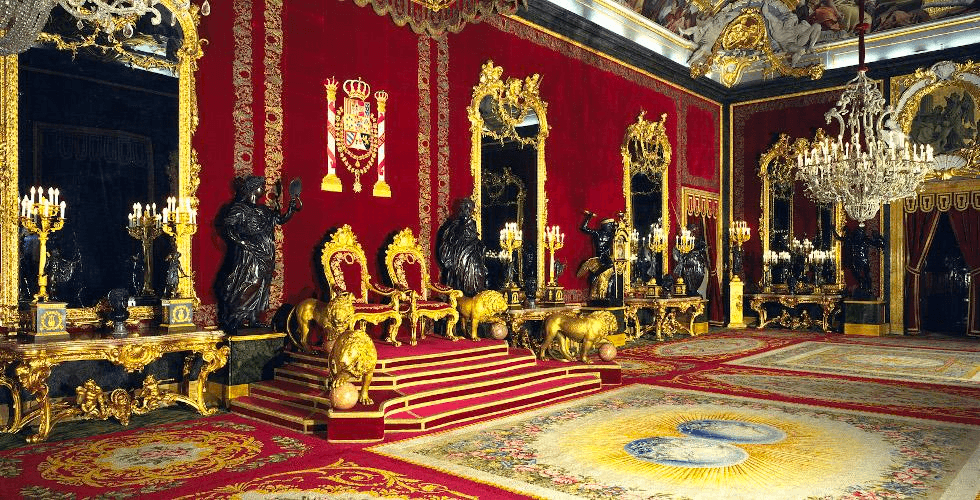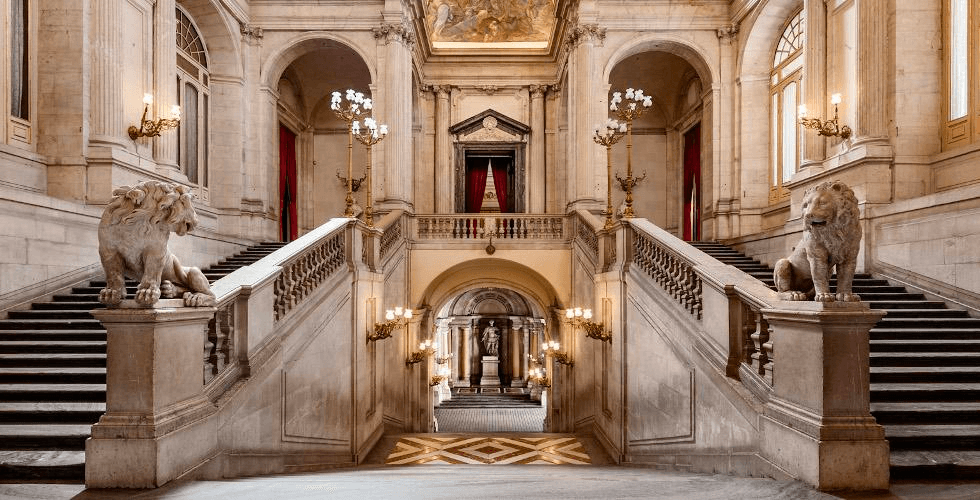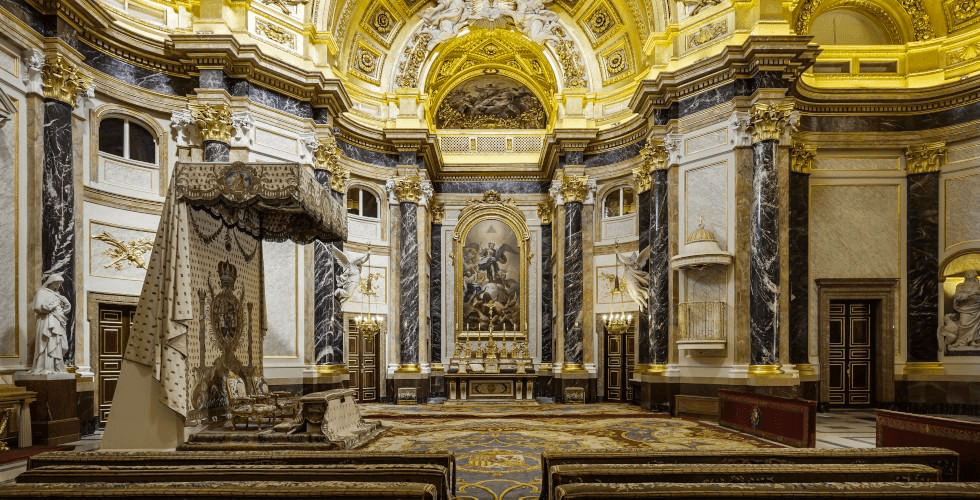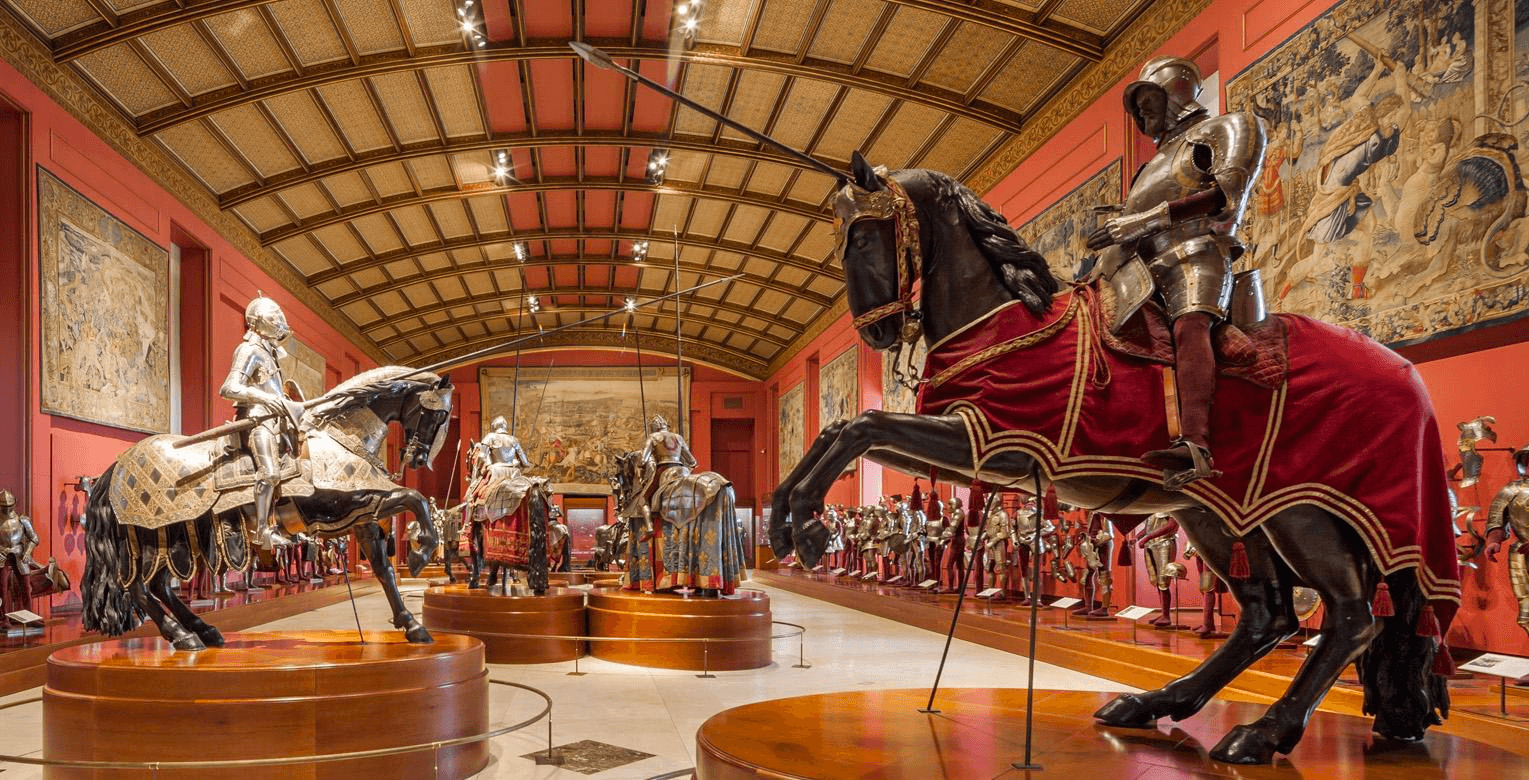Discover the Royal Palace of Madrid: A Traveler's Guide
Navigate Madrid's Royal Palace with ease
Summary
Spain's vibrant capital city, Madrid, is a treasure trove of history, culture, and architectural splendor. One of the city's most iconic landmarks is the Royal Palace of Madrid (Palacio Real de Madrid), a majestic monument that stands as a testament to the Spanish monarchy's rich past. As you plan your trip to this mesmerizing metropolis, be sure to include the Royal Palace on your itinerary.

History of the Royal Palace of Madrid
The Royal Palace of Madrid was built on the site of the Alcázar, a 9th-century Moorish fortress that was later converted into a royal residence by the Spanish monarchs. After a devastating fire in 1734, King Philip V commissioned the construction of a new palace, which was completed in 1755. Designed by Italian architects Filippo Juvarra and Giovanni Battista Sacchetti, the palace's grandiose style reflects the influence of the Baroque and Neoclassical periods.
Today, the Royal Palace of Madrid is the official residence of the Spanish Royal Family, although they currently live in the smaller and more modest Zarzuela Palace. The Royal Palace is now primarily used for state ceremonies, official functions, and other grand events.
Exploring the Palace Grounds
The Royal Palace of Madrid is surrounded by picturesque gardens, providing an ideal setting for a leisurely stroll. The Sabatini Gardens to the north and the Campo del Moro Gardens to the west are both excellent spots to take in the palace's awe-inspiring exterior. Additionally, the nearby Plaza de Oriente offers a spectacular view of the palace facade, as well as an array of statues depicting Spanish monarchs from the past.

As a visitor, you'll be able to explore several rooms within the palace, each exuding opulence and elegance. Some of the must-see areas include:
The Throne Room

Adorned with lavish frescoes by Italian artist Giovanni Battista Tiepolo, the Throne Room contains the thrones of King Felipe VI and Queen Letizia, as well as an impressive collection of royal treasures.
The Hall of Mirrors
Like the the famous Hall of Mirrors at the Palace of Versailles, the Royal Palace of Madrid has its own Hall of Mirrors. This room was where the kings and queens dressed, and features an array of sparkling mirrors and crystal chandeliers, creating a dazzling effect.
The Main Staircase

Designed by architect Francesco Sabatini, the palace's main staircase is a breathtaking architectural feature. Ascending three floors, the staircase with over 70 marble steps boasts a gilded bronze handrail, and an awe-inspiring fresco on the ceiling by Italian painter Corrado Giaquinto.
The Royal Chapel

This exquisite chapel is one of the most impressive rooms in the Royal Palace. It houses a collection of religious artwork, including frescoes by Italian painter Corrado Giaquinto. Spend some time observing the intricate details of the dome.
The Gasparini Room

Named after its designer, Mattia Gasparini, this exquisite room showcases intricate Rococo-style decorations, including gilded stuccowork, lush fabrics, and lavish frescoes. The Gasparini Room was once used as the private chamber of King Carlos III and is now considered one of the palace's most ornate and visually stunning spaces.
The Royal Armoury

Considered one of the finest in the world, the Royal Armoury displays a vast collection of armor, weapons, and artifacts belonging to the Spanish monarchs and their families.
Visiting Tips
Visiting the Royal Palace of Madrid can be overwhelming, given its size and the number of rooms and exhibits. Here are some tips to help you make the most of your visit:

- Visiting the Royal Kitchen: If you want to visit the Royal Kitchen, you must ask for the ticket that includes the kitchen tour, and you must plan to arrive at least an hour before the kitchen closes. Note that the kitchen is not available during the free entry hours.
- Throughout the year, there might be days of reduced hours or partial closing. Plan out where you want to visit and check out the official website for any reduced hours or partial closing to help you plan your visit. Take note also that the Royal Armoury has slightly differentiated timings from the other rooms of the palace.
- To get the most of your visit, take a guided tour or purchase the audio tour. For the audio tour, you can either rent a physical tablet at the museum or download the official mobile app and unlock the tour with an activation code.
- The palace is a large building, and you will be doing a lot of walking. Wear comfortable shoes so that you can enjoy your visit.
- The place has a free entry time from 5pm to 7pm (April to September) or 4pm to 6pm (October to March) on Monday to Thursday, which is available to EU citizens or holders of an European work permit. But this is also when it gets most crowded and guided tours are not provided then, so if you want to avoid the crowds, you may want to avoid this period.
Practical Information
🕤 **Opening Hours: **
- Winter hours (October to March): 10am - 6pm from Monday to Saturday, 10am - 4pm on Sunday
- Summer hours (April to September): 10am - 7pm from Monday to Saturday, 10am - 4pm on Sunday
- Box office and admission to the Palace close one hour earlier.
💲 **Cost: **12€ per regular ticket for just the palace; 16€ per regular ticket for the palace + kitchen
🚆 **Nearest metro station: **Opera station (Lines 2 and 5)